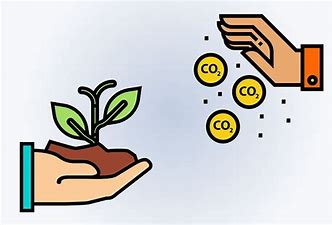Conab reduces estimate for this year’s season to 50.4 million from 53.4 million bags
09/21/2022

Adverse weather in the 2021/22 season, with prolonged periods of drought and frost in some regions, continues to impact part of Brazil’s coffee crop in this 2022/23 cycle and increase fears about the effects of the shortfall in global supply.
On Monday, the National Supply Company (Conab) again reduced its estimates for the average yield and harvest for the season, and analysts believe that the pressure in the market, especially for arabica coffee, may still increase.
“Not even the resumption of rainfall at a good level in the first months of 2022 was enough to avoid the decrease in output potential,” said Conab in a report. The average yield is now estimated at 27.4 bags per hectare, compared to 29 bags per hectare forecast in May. Each bag weighs 60 kilos. The number is only 3.7% higher than in 2021/22, a negative year in the coffee’s biennial cycle, that is, a crop with lower productivity, and 22.2% lower than the average in 2020/21, in a positive biennial cycle, like the current one.
Thus, the production projection was reduced to 50.4 million bags from 53.4 million bags in May. Compared to the previous season, the volume represents an increase of 5.6%. “This increase between crops is due to a discrete expansion of 1.7% in the producing area and the better productivity achieved by conilon coffee,” Conab said in the text.
Arabica coffee production is now estimated at 32.4 million bags, 3.1% more than the last cycle but 9.4% less than estimated in the previous report. “The number is below expectations, since unfavorable weather conditions between June and September 2021, with drought and frost, in addition to excessive rainfall in Minas Gerais, between December 2021 and February 2022, were determinant for a decrease in expected production.”
Rabobank reiterated in a new report on the crop that August was a dry month and if the weather continues like this in the coming weeks, it could impact the yield of the next crop. “Lower-than-expected yields have been reported in the current crop, especially in the Cerrado Mineiro region,” says the report, mentioning the area of Brazilian savanna in the state of Minas Gerais. Rabobank has reduced its 2022/23 (current) arabica crop forecast to 40.1 million bags. The previous projection was 41.4 million bags, according to a report signed by analyst Guilherme Morya.
The global Arabica coffee market, of which Brazil is the top supplier, is already going through a delicate moment since the “fundamentals indicate a difficult picture for the global supply,” said Eduardo Carvalhaes, with coffee brokers Escritório Carvalhaes. According to him, the shortfall is greater than initially projected by agronomists, producers, and cooperatives.
Even so, he reiterates, since there is a lack of verifiable data, especially in relation to Brazilian stocks, the analysis is based more on “feelings rather than numbers.” Mr. Carvalhaes, who is in constant contact with coffee producers and buyers, said that there is a slow movement of new crop coffee arriving at the warehouses, which is unprecedented for this time of year, the end of harvest.
This week, Carlos Augusto Rodrigues de Melo, head of Cooxupé, the largest Arabica cooperative in the world, said it will receive about 15% less coffee from its members than what was projected at the beginning of the harvest, which should total about 4 million bags.
As for the country’s stocks, Conab’s latest data, from March, indicated 13.1 million bags – 11.4 million of arabica coffee and 1.7 million of the conilon variety, which is similar to the robusta variety. “The work of surveying private stocks, as a process of information gathering for knowledge generation and decision-making, needs continuous improvement,” Conab told Valor.
In the case of conilon coffee, Conab raised production estimates from 17.7 million bags to a record 18 million bags.
*By Fernanda Pressinott, Érica Polo — São Paulo
Source: Valor International

/i.s3.glbimg.com/v1/AUTH_37554604729d4b2f9f3eb9ad8a691345/internal_photos/bs/2022/A/k/LzAAnqQTi6BwzKBAxRlA/220822silviamatos35.jpg)

/i.s3.glbimg.com/v1/AUTH_37554604729d4b2f9f3eb9ad8a691345/internal_photos/bs/2022/1/c/0Klx1ZSuACN3ksP3GRrw/150922suzano18.jpg)
/i.s3.glbimg.com/v1/AUTH_37554604729d4b2f9f3eb9ad8a691345/internal_photos/bs/2022/A/z/6XPcl3TveXqHNAXxUptQ/190922jim-20zhang11.jpg)
/i.s3.glbimg.com/v1/AUTH_37554604729d4b2f9f3eb9ad8a691345/internal_photos/bs/2022/n/k/HLNsccTaaWfpMfeFQ82A/niobio-reproducao.png)
/i.s3.glbimg.com/v1/AUTH_37554604729d4b2f9f3eb9ad8a691345/internal_photos/bs/2021/Z/B/TannLTR0mCZPINCIQcHA/13emp-100-oi-b1-img01.jpg)
/i.s3.glbimg.com/v1/AUTH_37554604729d4b2f9f3eb9ad8a691345/internal_photos/bs/2022/i/y/VlS7iPQHKHXul9CLviGA/220519fabiosiccherino-8348.jpg)

/i.s3.glbimg.com/v1/AUTH_37554604729d4b2f9f3eb9ad8a691345/internal_photos/bs/2022/v/9/slf0U9T2Kvgspm6GFiWQ/19emp-100-granado-b10-img01.jpg)